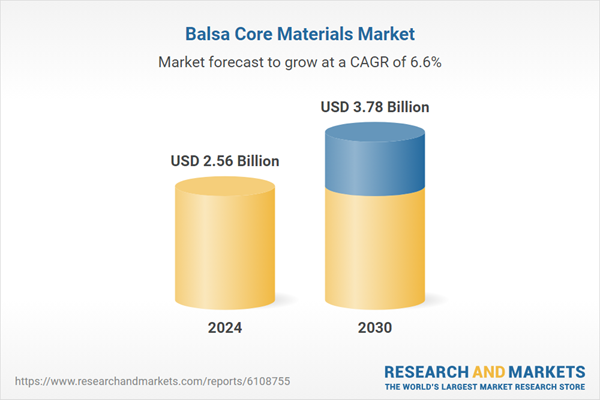Speak directly to the analyst to clarify any post sales queries you may have.
10% Free customizationThis report comes with 10% free customization, enabling you to add data that meets your specific business needs.
Key Market Drivers
Rising Demand for Lightweight Materials in Aerospace Industry
The market is witnessing notable growth driven by the aerospace industry’s increasing focus on lightweight materials to improve fuel efficiency and reduce carbon emissions. Balsa wood is widely used in structural aerospace components like sandwich panels, wings, and fuselages due to its exceptional strength-to-weight characteristics. As global air travel continues to rise, aircraft production is increasing, pushing demand for advanced core materials like balsa. Manufacturers are adopting balsa to align with fuel-saving objectives and meet stringent environmental regulations. Its low density and high compressive strength make it ideal for structural applications. Advancements in composite technology further improve balsa’s compatibility with modern aircraft, enhancing its adoption. Growth in emerging markets’ aviation sectors and rising global air passenger traffic - as projected by IATA to grow at a 3.6% CAGR from 2025 to 2035 - further supports increased demand for lightweight balsa core materials.Key Market Challenges
Supply Chain Vulnerabilities Due to Geographic Concentration of Raw Material
A major challenge for the Balsa Core Materials Market is its reliance on raw balsa wood primarily sourced from Ecuador and Peru. This geographic concentration introduces supply chain risks due to exposure to adverse weather conditions, political instability, labor issues, and environmental regulations in these regions. Disruptions in supply can lead to significant production delays and elevated costs for manufacturers. Furthermore, the long maturation period of balsa trees - typically five to ten years - limits the market’s ability to respond quickly to demand surges. Regulatory constraints on deforestation and conservation laws may also restrict harvesting, tightening the raw material supply and causing volatility in pricing and availability across the value chain.Key Market Trends
Integration of Hybrid Core Structures to Enhance Performance Versatility
An emerging trend in the market is the growing adoption of hybrid core structures that blend balsa wood with other materials like polymer foams, honeycombs, and carbon fiber reinforcements. This combination enables manufacturers to customize performance characteristics such as strength, weight, insulation, and cost across different components. Hybrid cores are increasingly favored in demanding industries like aerospace, marine, and wind energy, where tailored solutions are essential for operational performance. For example, using balsa in high-stress areas and moisture-resistant foams in exterior zones enhances both durability and structural performance. These hybrids also offer cost optimization by reducing reliance on expensive materials in non-critical areas. In wind turbine applications, hybrid designs support larger blade spans with reduced weight, improving efficiency and extending product life cycles.Key Market Players
- 3A Composites (a part of Schweiter Technologies)
- Diab Group
- CoreLite Inc.
- Gurit Holding AG
- Carbon-Core Corporation
- I-Core Composites
- Nord Compensati
- The Gill Corporation
- Plascore Incorporated
- Alcan Composites
Report Scope:
In this report, the Global Balsa Core Materials Market has been segmented into the following categories, in addition to the industry trends which have also been detailed below:Balsa Core Materials Market, By Type:
- Monolayer Balsa Core
- Multilayer Balsa Core
Balsa Core Materials Market, By Product Form:
- Plain Balsa Core
- End-Grain Balsa Core
- Contoured Balsa Core
- Rigid Balsa Panels
Balsa Core Materials Market, By Application:
- Wind Energy
- Marine
- Aerospace
- Transportation
- Construction
- Industrial Equipment
Balsa Core Materials Market, By Region:
- North America
- United States
- Canada
- Mexico
- Europe
- Germany
- France
- United Kingdom
- Italy
- Spain
- South America
- Brazil
- Argentina
- Colombia
- Asia-Pacific
- China
- India
- Japan
- South Korea
- Australia
- Middle East & Africa
- Saudi Arabia
- UAE
- South Africa
Competitive Landscape
Company Profiles: Detailed analysis of the major companies present in the Global Balsa Core Materials Market.Available Customizations:
With the given market data, the publisher offers customizations according to a company's specific needs. The following customization options are available for the report.Company Information
- Detailed analysis and profiling of additional market players (up to five).
This product will be delivered within 1-3 business days.
Table of Contents
Companies Mentioned
- 3A Composites (a part of Schweiter Technologies)
- Diab Group
- CoreLite Inc.
- Gurit Holding AG
- Carbon-Core Corporation
- I-Core Composites
- Nord Compensati
- The Gill Corporation
- Plascore Incorporated
- Alcan Composites
Table Information
| Report Attribute | Details |
|---|---|
| No. of Pages | 185 |
| Published | July 2025 |
| Forecast Period | 2024 - 2030 |
| Estimated Market Value ( USD | $ 2.56 Billion |
| Forecasted Market Value ( USD | $ 3.78 Billion |
| Compound Annual Growth Rate | 6.5% |
| Regions Covered | Global |
| No. of Companies Mentioned | 10 |









